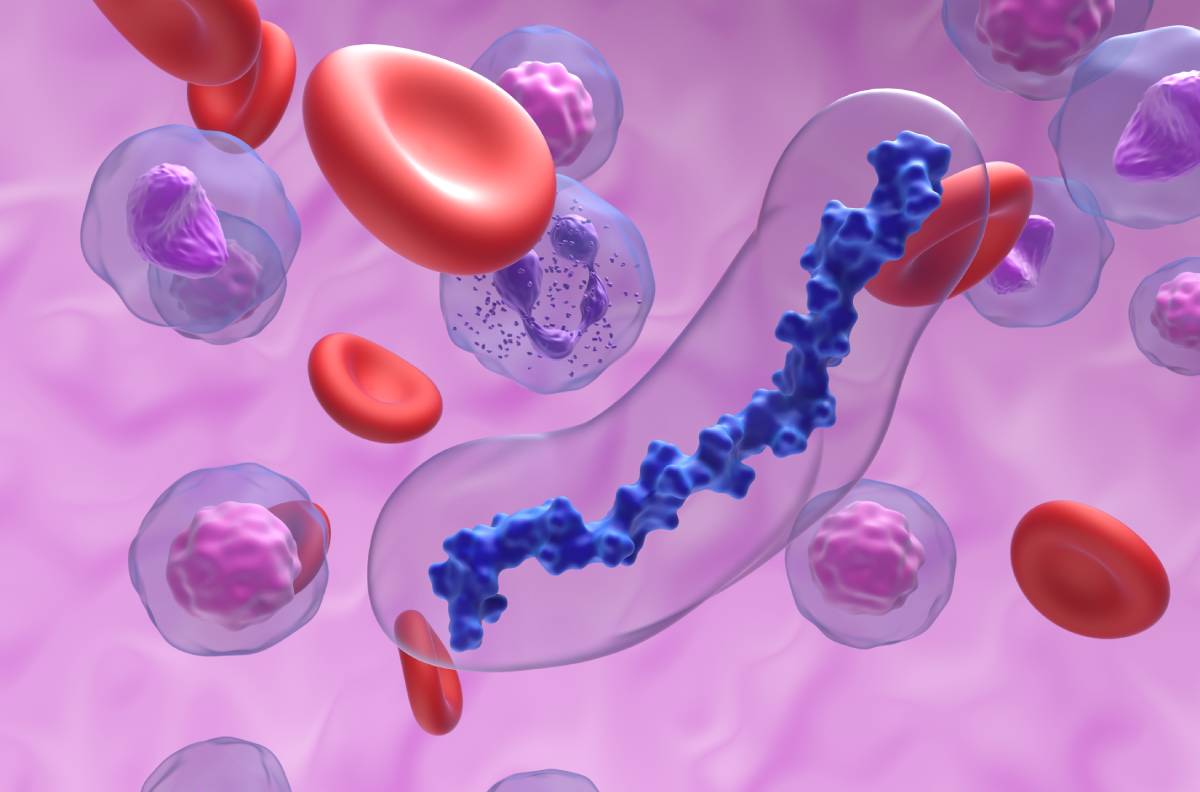Anticoagulants play a crucial role in managing and preventing thromboembolic disorders, including deep vein thrombosis, pulmonary embolism, and stroke. Traditional anticoagulants such as warfarin and heparin have long been the standard of care, but their limitations—including the need for regular monitoring, dietary restrictions, and bleeding risks—have prompted the search for more effective and safer alternatives. Recent research has led to advances in anticoagulant agents that target specific elements of the coagulation cascade, such as Factor IX inhibitors.
The coagulation cascade is a complex series of biochemical events that lead to clot formation 1. Traditional anticoagulants often target broad pathways within this system, which can increase the risk of adverse effects. The development of targeted therapies, such as Factor IX inhibitors, highlights a shift toward more precise anticoagulation strategies that aim to balance efficacy and safety 2.
Factor IX is a component of the coagulation cascade that is involved in the intrinsic pathway of clot formation. Research into an anticoagulant that acts specifically as a Factor IX inhibitor has led to the development of monoclonal antibodies and small molecules designed to selectively block Factor IX activity, and it has experienced major advances in recent years. One promising agent is concizumab, a monoclonal antibody targeting tissue factor pathway inhibitor, which indirectly modulates Factor IX function. This agent has shown potential in reducing thrombosis risk while maintaining hemostatic balance 3.
Gene-silencing techniques such as small interfering RNA (siRNA) therapies are also being investigated. Fitusiran, a siRNA-based therapy, targets antithrombin, leading to increased thrombin generation and enhanced hemostasis. While not a direct Factor IX inhibitor, its mechanism indirectly affects Factor IX function and has demonstrated efficacy in early clinical trials for hemophilia and thrombotic disorders 4,5.
Targeted anticoagulants, like Factor IX inhibitors, offer several benefits over traditional therapies. These agents have predictable pharmacokinetics, lowering the requirements for monitoring. Additionally, they may provide a lower risk of major bleeding compared to traditional therapies, which is a major concern for patients on long-term anticoagulation. Their selectivity could translate to improved safety profiles and better patient adherence.
Novel anticoagulant agents, including Factor IX inhibitors, must undergo clinical evaluation before these research advances can be widely incorporated into use. Questions remain regarding their long-term safety, reversibility in cases of emergency bleeding, cost-effectiveness, and accessibility. Ongoing trials are expected to provide further insights into their safety profile and comparative effectiveness against existing anticoagulants 6,7.
The development of novel anticoagulants represents a significant step forward in anticoagulation therapy, and as research continues, these innovative agents may provide safer and more effective alternatives for patients requiring long-term anticoagulation, ultimately improving outcomes and quality of life for individuals at risk of thrombotic disorders.
References
1. Chaudhry, R., Usama, S. M. & Babiker, H. M. Physiology, Coagulation Pathways. in StatPearls (StatPearls Publishing, Treasure Island (FL), 2025).
2. Franchini, M., Liumbruno, G. M., Bonfanti, C. & Lippi, G. The evolution of anticoagulant therapy. Blood Transfus 14, 175–184 (2016). DOI: 10.2450/2015.0096-15
3. Concizumab. https://go.drugbank.com/drugs/DB12820.
4. Srivastava, A. et al. Fitusiran prophylaxis in people with severe haemophilia A or haemophilia B without inhibitors (ATLAS-A/B): a multicentre, open-label, randomised, phase 3 trial. The Lancet Haematology 10, e322–e332 (2023). DOI: 10.1016/S2352-3026(23)00037-6
5. Jiménez-Yuste, V. & Álvarez-Román, M. T. Fitusiran prophylaxis in severe haemophilia without inhibitors. The Lancet Haematology 10, e308–e309 (2023). DOI: 10.1016/S2352-3026(23)00057-1
6. Franchini, M. & Mannucci, P. M. Inhibitors of propagation of coagulation (factors VIII, IX and XI): a review of current therapeutic practice. Br J Clin Pharmacol 72, 553–562 (2011). DOI: 10.1111/j.1365-2125.2010.03899.x
7. Schulman, S. Advantages and limitations of the new anticoagulants. Journal of Internal Medicine 275, 1–11 (2014). DOI: 10.1111/joim.12138
